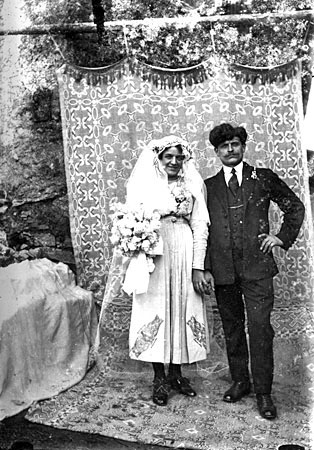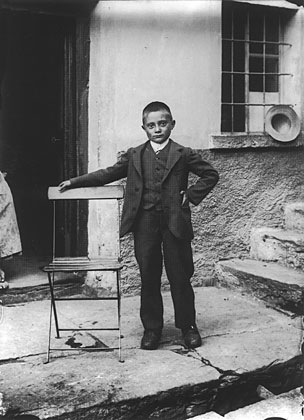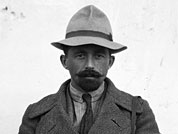A priest describes the common man

The men are strong and tough, but generally unsmiling. Among the women, beauty is not a universal quality.
This is how the Benedictine priest Paolo Ghiringhelli (born Bellinzona 1778, died Einsiedeln 1861) described the people of canton Ticino in his day.
The following extracts are taken from Antonio Galli’s book “Ticino at the beginning of the 19th century in the ‘Topographical and Statistical Description’ of Paolo Ghiringhelli”, 1943.
The men
Where physical appearance is concerned, the inhabitants are of medium build, though men of exceptional stature are not uncommon. Those living in both highland and lowland areas are strong and well-built, fit for all kinds of labour.
It is common to see muleteers and carters load and unload sacks and barrels weighing more than a hundred pounds with ease, and raise casks containing 32 or even 40 measures to their lips to drink their fill.
The skin colour of the common people is much darker than in central Switzerland, and darker in some of the mountain regions than in the lowlands. Their features are incomparably more expressive than in German-speaking Switzerland, though what they express is not always particularly pleasant. Those strikingly open, happy faces you find in large numbers north of the Alps, especially in the smaller cantons, become rarer the further you go from the St. Gotthard Pass.
The women
Among the women, beauty is not a common attribute. Those from the Levantina above Dazio Grande, from some villages on the Riviera and from Bellinzona are more favoured in this respect. And the women from some parts of the Val Maggia are also attractive.
If not worn out by too much heavy labour, and careful not to drink excessive quantities of wine and especially local brandy, they maintain their youthful beauty longer than do German women, even after bearing a number of children. Sometimes a grandmother might be taken for a woman in her prime.
However, women who cannot or will not abide by these conditions are all subject to the changes one normally observes in the peoples of the south: while they are still young, their features become masculine and unattractive.
In the case of Ticino women – and I believe the same is also true of their Italian counterparts – their voices tend to be louder and more masculine than those of women north of the Alps. They seem quite proud of the fact. Indeed, they see the softer speech of German women as a defect: babyish, they call it.
In no other part of Switzerland will you find so many deformed, deaf or dumb people. This can be ascribed to the backbreaking tasks performed by the women, who often carry heavy loads up and down the mountainside, even on the day they give birth, the lack of training of midwives, and poor child nutrition. The mothers, and indeed all the womenfolk, are often far from home during the day in spring and autumn, leaving their babies in the care of other children who can barely look after themselves.
Health and culture
People do not live to a ripe old age. The almost continuously damp winters, the very changeable weather in spring and autumn, especially in February and November, the hard and unhealthy way of life, the heavy food, the excessive use of wine and local brandy, all militate against it.
Intermittent fevers are the most common illnesses, claiming many victims. Violent fevers are also common. And annual epidemics kill off a great many people.
There is a deep and general ignorance, which unfortunately is not limited to the peasant population. One does come across people of culture and learning, but they are rare exceptions.
Their knowledge and education are not transmitted to others: their light leaves others in darkness. The more wealthy classes are content with a very limited degree of culture. Even those who have completed a scientific education tend to be lazy when it comes to reading: very little money finds its way out of the canton for the purchase of books.
Ticino population:
1850: approx. 118,000
1900: 139,000
1950: 175,000
2000: 307,000
Today: 330,000
(Official canton Ticino statistics)
In the early part of the 19th century, the rate of illiteracy in Ticino was very high. There were few schools and teachers despite a law that established compulsory education.
The schools that did exist were reserved for boys. However they were often absent, having to work on the family farm.
In the 1830s, statesman Stefano Franscini laid the foundations for the creation of a modern education system in the canton. Thanks to the reform, many people were able to migrate abroad with some basic education.
Franscini later expanded his thinking beyond the canton and, in 1855, contributed to the founding of the Federal Institute of Technology in Zurich.

In compliance with the JTI standards
More: SWI swissinfo.ch certified by the Journalism Trust Initiative


You can find an overview of ongoing debates with our journalists here. Please join us!
If you want to start a conversation about a topic raised in this article or want to report factual errors, email us at english@swissinfo.ch.